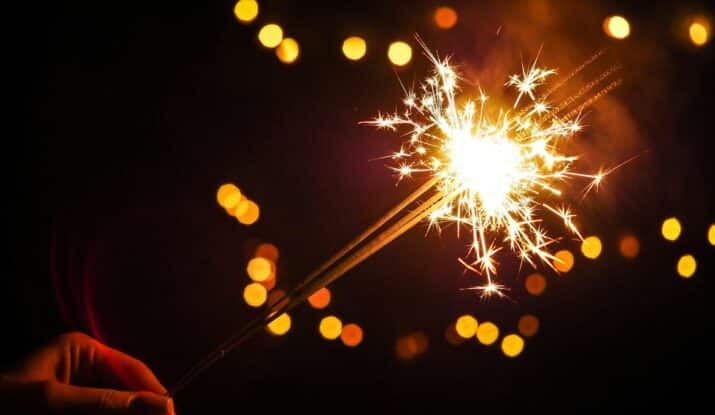When it comes to fiery summer traditions, few festivals are as visually spectacular and deeply rooted in local culture as Sant Joan in Catalunya. Celebrated on the night of June 23rd, this festival marks the summer solstice with bonfires, fireworks, music, and magical rituals. It’s not just a party—it’s a powerful expression of community, tradition, and Catalan identity.
For locals, Sant Joan is both a celebration of the sun and a night believed to hold mystical powers. From coastal beach towns to small inland villages, Catalunya transforms into a land of light and fire, inviting everyone to dance, eat, and welcome summer with open arms.
Whether you’re a curious traveler or a local looking to reconnect with your roots, this article offers All you need to know of: Sant Joan in Catalunya, packed with traditions, tips, and deep cultural insights.
All you need to know of: Sant Joan in Catalunya
Sant Joan, or Saint John’s Eve, is one of the oldest and most symbolic festivals in Catalunya. This celebration dates back to pagan times when people lit bonfires to honor the sun and ward off evil spirits. Later, it merged with the Christian celebration of Saint John the Baptist, becoming a fascinating blend of religion, mythology, and folklore.
Across Catalunya, the most iconic element of Sant Joan is fire—bonfires are lit in town squares, streets, and beaches to symbolize purification and the power of light. These fires are believed to cleanse the soul and protect homes from evil forces. It’s also common to jump over the flames three times to make wishes come true or cleanse oneself spiritually.
The festival isn’t complete without fireworks, known as petards, which children and adults light up throughout the evening. The noise is part of the tradition, believed to chase away bad spirits and negative energy. As night falls, the sky turns into a dazzling light show.
Music, dancing, and food are just as important. Many towns host open-air parties with live bands or DJs, where people dance barefoot in the sand until dawn. Families and friends gather to share meals, often including coca de Sant Joan, a sweet bread topped with candied fruit and pine nuts, paired with cava (Catalan sparkling wine).

Sant Joan is much more than just a summer party—it’s a heartfelt ritual, a cultural legacy, and a vivid celebration of life and light. It’s also one of the best times of the year to experience the Catalan spirit at its brightest and wildest.
History and Origins of Sant Joan
The celebration of Sant Joan goes back thousands of years. Originally, it was a pagan festival marking the summer solstice, the shortest night and longest day of the year. Ancient cultures saw this moment as the height of solar power and celebrated with fire, which was seen as a gift from the gods.
As Christianity spread through Europe, the festival was adapted to honor Saint John the Baptist, whose birth is celebrated on June 24. In Catalunya, the traditional pagan customs remained strong and blended with the religious holiday, creating the unique festival known today.
Over the centuries, towns developed their own local rituals. In some areas, flames from the Canigó Flame—a sacred fire lit on the mountain of Canigó—are carried by runners to ignite bonfires across Catalunya, symbolizing unity and heritage. This tradition started in the 1950s as a way to preserve Catalan identity during Franco’s regime, when regional traditions were suppressed.
Today, Sant Joan is a mix of these layers of history: ancient sun worship, religious homage, and modern-day celebration. It’s a night when Catalunya looks both forward and backward, blending tradition with joy.
What to Expect on the Night of Sant Joan
Planning to join the festivities? Here’s what to expect when you experience Sant Joan in Catalunya:
- Fireworks and Petards: Starting early in the evening, the sound of fireworks is everywhere. Expect loud bangs, flashes of color, and even small children lighting petards in the streets. It’s chaotic, but in a good way.
- Bonfires: In neighborhoods and on beaches, people build large bonfires to light after sunset. Some communities even host contests for the biggest or most creative bonfire.
- Coca de Sant Joan: Don’t miss this traditional dessert. Variants include custard-filled, chocolate-covered, or even cream-infused versions. It’s usually enjoyed with cava.
- Live Music and Street Parties: Local bands, DJs, and live performers keep the crowd dancing late into the night. Some of the most famous parties happen in Barcelona’s Barceloneta beach and along the Costa Brava.
- Beach Celebrations: On the coast, thousands of people gather at the beach to party, swim under the moonlight, and enjoy fireworks. Some even spend the entire night there.
It’s noisy, colorful, a little wild, and totally unforgettable.
Top Places to Celebrate Sant Joan in Catalunya
| Location | Why It’s Special |
|---|---|
| Barcelona | Massive beach parties at Barceloneta and Bogatell, with music and fireworks |
| Tarragona | Traditional parades and strong community bonfires in the old city |
| Reus | Historic center with folk dances and traditional fire runs |
| Girona | More relaxed, family-friendly celebrations with amazing food |
| Figueres | A torch-lit parade featuring the Flama del Canigó arrival ceremony |
| Coastal towns (Sitges, Blanes, etc.) | Intimate beach parties with locals, away from tourist crowds |
No matter where you go, you’ll find warmth, laughter, and the spark of something truly magical.
Safety Tips for Enjoying Sant Joan
Celebrating Sant Joan can be thrilling, but a few safety tips can make your experience even better:
- Be cautious with fireworks. If you’re not familiar with them, avoid lighting them yourself.
- Wear closed shoes. With sparks and debris on the ground, flip-flops aren’t the best choice.
- Watch out for crowded beaches. Keep your belongings safe and avoid areas that get overly packed.
- Stay hydrated. June nights can be warm, and dancing with cava in hand makes water your best friend.
- Use public transport. Roads may be closed, and parking can be a nightmare.
Cultural Significance of Sant Joan
Sant Joan is more than a party—it’s a cultural statement. For many Catalans, it’s a night of connection to their land, heritage, and identity.
The festival reflects core Catalan values like community, resilience, and freedom. During Franco’s dictatorship, it was an act of resistance to maintain Sant Joan traditions. Today, it remains a symbol of cultural pride and collective joy.
It’s also deeply tied to nature and spirituality. Many people believe Sant Joan’s night has healing power, especially if you bathe in the sea at midnight or jump over a bonfire. Wishes made on this night are thought to carry more weight.
Celebrating Sant Joan in Catalunya is like stepping into a dream made of fire, music, and ancient tradition. It’s a magical moment when the entire region comes alive to honor the sun, community, and freedom.
Whether you’re dancing under the stars on a beach in Barcelona or watching the Flama del Canigó arrive in a quiet village square, the essence of Sant Joan will stick with you. It’s more than a party—it’s a celebration of culture, light, and togetherness that you’ll never forget.
If you’re planning to visit Catalunya in June, mark your calendar. There’s no better way to connect with the heart of this region than by experiencing All you need to know of: Sant Joan in Catalunya firsthand.

